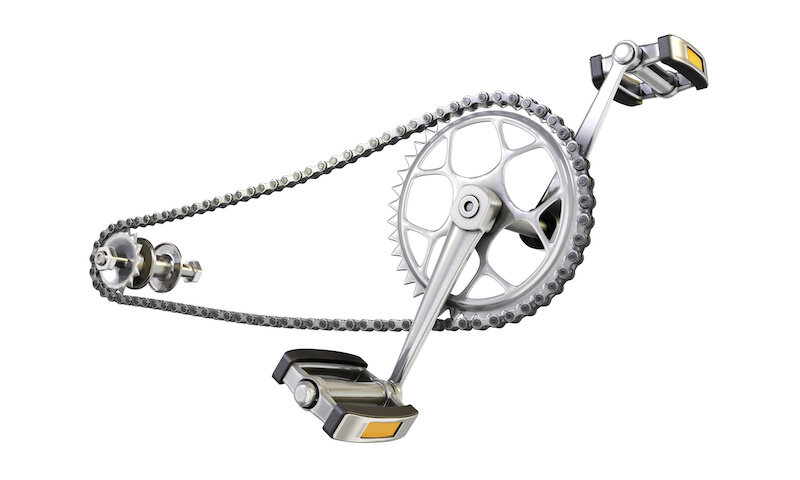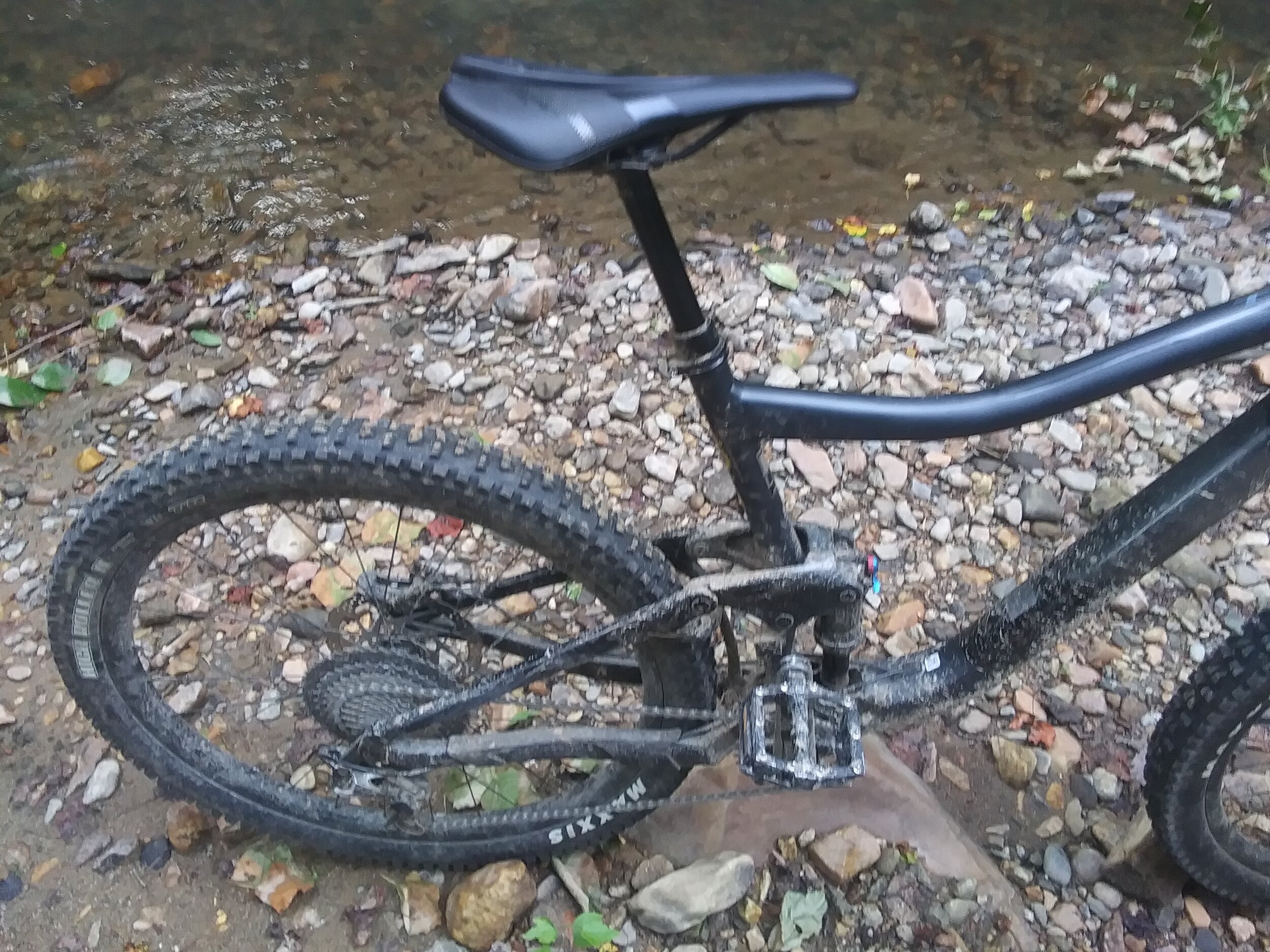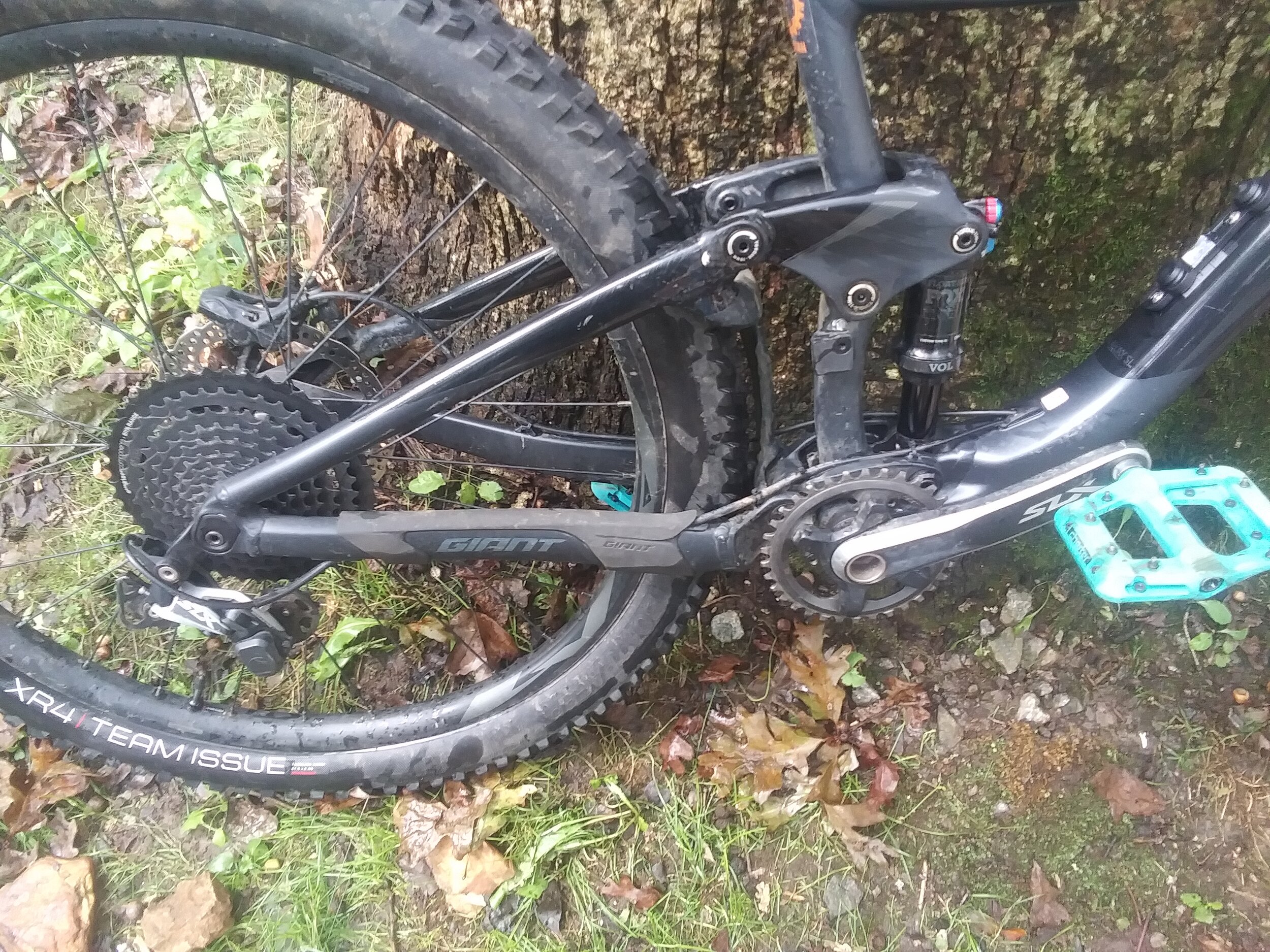Platform or flat pedals - No special shoes required
Platform Transfer Pedals or flats are the most basic pedal type and as the name suggests, platform pedals provide a large, flat area for regular shoes. Flats are the stock pedal type for most bicycles.
Flat pedals provide a platform for normal shoes, however, cycle or mountain bike-specific shoes have soft and grippy soles, which stay better connected to the pedals while having a stiffer body for improved pedaling efficiency and power transfer.
1) Upgrade Your Pedals
The image on the left is a platform pedal that comes standard with many MTB bikes, whereas the pedal on the right is an upgraded one. If you are slipping off your pedals, upgrading to a bigger, knobbier, toothier, and pinned pedal provides more stability, contact area, friction, and tackiness.
This will do wonders for your power and control while keeping your feet connected to your bike.
Reasons why your feet are slipping off the pedals
Pedals are too small. Cheap, plastic, standard platform pedals are small. Look for flat pedals at least 2.5 x 3.5 inches.
Your stock pedals are not ‘sticky’ enough. Cheap rubber or plastic pedals are not optimally grippy since they have minimal teeth, studs, and traction lugs.
Your pedals are dirty. This is especially relevant if you are a mountain biker. Mud, dirt, and grime reduce the stickiness of the pedal and reduces the contract area.
This stock pedal doesn’t provide much traction
If your feet are routinely slipping and you are still riding the pedals your bike came with, then the first thing to do is replace those pedals with a larger, pinned flat pedal. Go to your local bike shop and find a pair that is the right size and level of aggressiveness for your riding style.
2) Bike Specific Shoes
Years ago, the best shoes for mountain biking were skateboarding shoes. Nowadays, several manufactures, such as Five Ten, Teva, Giro, Ride, and Specialized produce non-clipless MTB and cycle-specific shoes for platform pedals.
These shoes are made with specially formulated rubber compounds that make the soles ultra-soft which ‘sticks’ the cyclist’s foot to the pedal.
The soles of these shoes have a huge flat bottom and the tread pattern is designed to optimize the connection of the traction lugs with the grip pattern.
Athletic Shoes & Cycling
Athletic sneakers are designed for comfort and enhancing running-related tasks, such as jumping, agility/maneuverability, sprinting, stopping, and reducing impact forces. These shoes optimize for ground and rotational traction between the outsole and surface for running-related sports.
Basketball, tennis, running, and general athletic shoes with hard or knobby soles do NOT grip the pedals as they are designed for grass, mud, and hardwood floor surfaces.
Athletic shoes, especially running shoes are very flexible, making them inefficient for pedaling, especially climbing.
If you already upgraded your platform pedals and are still slipping, then it’s time to look at a nice pair of flatties, whose soft and sticky rubber soles allows pins and traction lugs to sink into it, sticking the shoe to the pedal.
Comfort & Athletic Shoes
Keep in mind that athletic sneakers are comfy, lightweight, provide great ventilation, and are great for walking and jogging. Both clipless and non-clipless bicycle-specific shoes are stiff, hard to walk in, and don’t provide the same level of comfort as your favorite pair of kicks. As with anything else in life, there are always trade-offs.
3) Riding Technique
Replacing the stock plastic pedal is a good first step.
Incorrect saddle height
Wrong gear for the terrain
Pedaling really fast or hard (like racing up a hill)
Clipless Pedals
In the early days of racing, all bikes had fixed gears, which meant no freewheel and thus no coasting (the freewheel was introduced in the early 20th-century).
Even today, ‘fixies’ have a single gear and no brakes. The only way to speed up, slow down, or stop is by changing your pedaling rate or pushing back against the pedals. Since the pedals are always spinning, if a foot comes off, it is dangerous and difficult to get your feet back on, unless you have toe clips or clipless pedals.
For performance riding, XC-MTB, or road cycling, clipless pedals improve control and safety by not allowing your feet to slip off the pedals since your shoes are connected to the pedals.
Your feet cannot slip when fast pedaling, jumping a log or curb, pumping up a steep hill, or descending a loose and bumping dirt path/road.
The Main Benefit of Clipless
The primary benefit of clipless is you don’t have to worry about what your feet are doing or slipping off the pedals. The performance benefits and pedaling technique improvements are greatly exaggerated.
READ: Do Clipless Pedals really make a difference?
Final Thought
A good platform pedal combined with a flat, sticky bike-specific shoe can rival that of clip-in pedals for grip, control, and power transfer.
Is your bike dialed-in??
Bike Fitting - Not just for road cyclists. Learn More
Jesse is the Director of Pedal Chile and lives in La Patagonia. Jesse has a Master of Science in Health and Human Performance and is an avid MTBer. Jesse enjoys reading books, particularly non-fiction and academic studies. Favorite MTB trail? The singletrack on the active volcano in Chile.
Sources & References
FitzGibbon, S., Vicenzino, B., & Sisto, S. A. (2016). INTERVENTION AT THE FOOT-SHOE-PEDAL INTERFACE IN COMPETITIVE CYCLISTS. International journal of sports physical therapy, 11(4), 637–650.
Stępniewski, A.A., and J. Grudziński. “The Analysis of Pedaling Techniques with Platform Pedals.” International Journal of Applied Mechanics and Engineering, vol. 19, no. 3, 1 Aug. 2014, pp. 633–642, 10.2478/ijame-2014-0044.



















